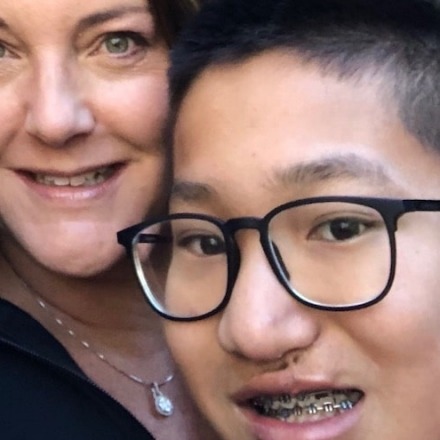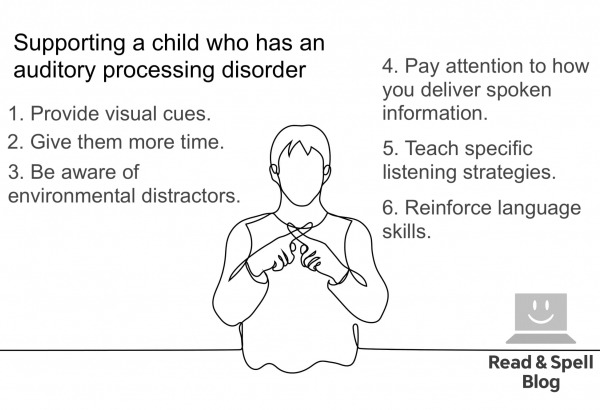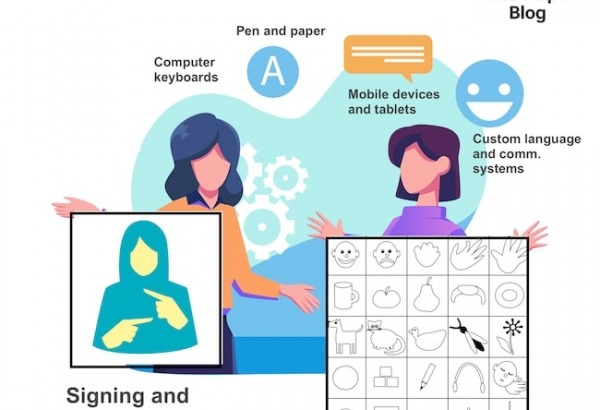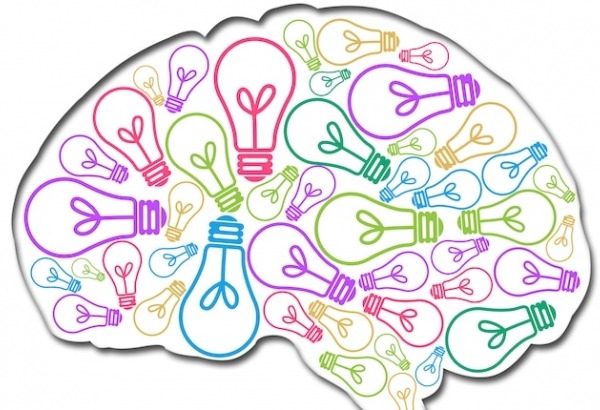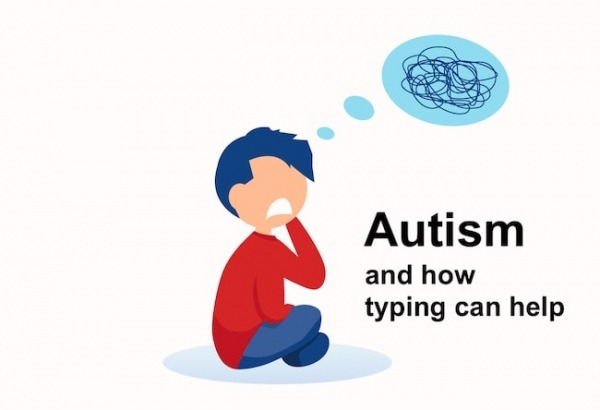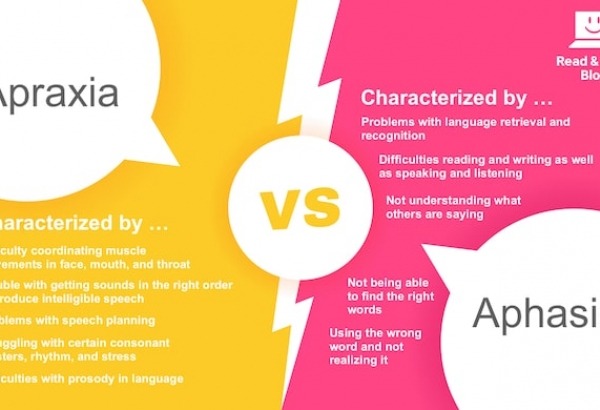What is a receptive expressive language disorder?
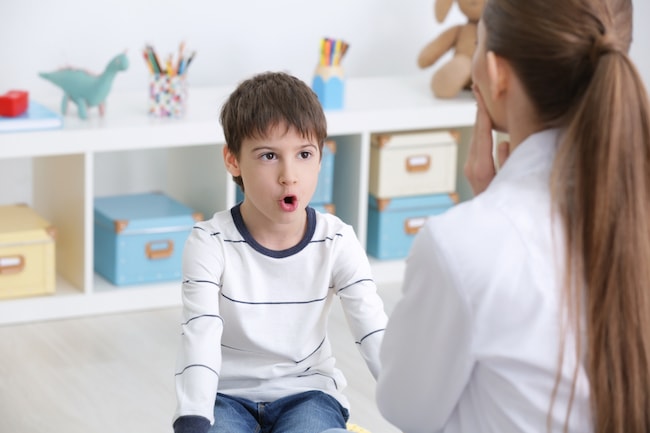
Receptive language skills have to do with the ability to understand words, sentences, and speech acts, and expressive language skills are about producing speech.
Children with a receptive language disorder can have trouble understanding what others are saying to them. It may be that the child shows signs of confusion and a lack of understanding in a classroom setting, fails to follow verbal instructions at home, has a hard time getting along with peers, or simply struggles to process speech in direct conversation. They may overly rely on reading facial expressions and have particular trouble with complex utterances.
Children with a developmental expressive language disorder commonly experience difficulties expressing themselves. They may produce incoherent utterances with incorrect grammar or inappropriate vocabulary. Their speech acts can contain false starts, lack cohesiveness, or trail off, and they may rely on simplified messaging strategies that prevent them from translating more complex levels of thought and reasoning into language.
In a mixed receptive expressive language disorder an individual’s ability both to understand and produce speech is affected
Language disorder vs. brain injury
Mixed receptive expressive language disorders can be acquired as a result of a stroke or brain injury, or can be developmental. Conditions can vary in severity and because they exist on a spectrum, no two individuals will struggle in exactly the same way. Some might have more problems with understanding spoken language than producing it, and others may experience the same level of difficulty in both directions of communication.
More on language disorders
An estimated 6% of children aged 5 and older struggle with language disorders (1). Language disorders differ from language delays in that children with a delay will go through the same stages as a typically developing child and will eventually catch up with their peers.
Kids who struggle with language disorders do not necessarily grow out of their communication problems without interventions, such as speech therapy. That’s why the sooner verbal processing disorders are picked up on, the better, to prevent a child from falling behind at school and developing low-self esteem or low confidence as a result of a language communication difficulty.
Researchers believe a child's chances of having a developmental language disorder are linked to family history and have identified several genes that may be involved with speech and language processing difficulties (2).
It’s also not uncommon for mixed expressive and receptive language disorders to co-present with attention based difficulties such as ADHD, or with autism spectrum disorder (ASD).
They may be present in the absence of or in addition to hearing impairment, muscle weakness, as seen in dysarthria, and motor skills problems that affect coordination and speech act planning, such as in apraxia of speech. What differentiates them is that dysarthria and apraxia of speech on their own do not typically affect an individual's ability to understand speech.
Testing for a developmental language disorder
Some receptive and productive issues may be flagged up in a general language skills screening, but the American Speech-Language-Hearing Association (ASLHA) recommends further screening if a language disorder is suspected. A child may perform poorly on a productive task, such as picture naming, or provide responses to direct questions that demonstrate a failure to understand the prompt.
A speech and language pathologist can perform a wider battery of tests, which often includes an evaluation of the child’s speech. They will consider lexical characteristics of speech, including the breadth and depth of spoken vocabulary, if the child is reaching for words or over-relying on chunks of language, as well as the grammaticality of the phrases used and the child’s ability to assemble words into coherent messaging. A diagnosis will typically be given when a child has below-average test scores and performs poorly on language-based test batteries relative to non-verbal measures of ability, such as spatial and cognitive reasoning.
A note on expressive language disorders
When a child has trouble trying to express their thoughts but does not struggle with comprehension, it is referred to as just an expressive language disorder. Severe cases are sometimes apparent in children aged 2+, but more mild forms may not be visible until communication issues disrupt learning and social interaction at school.
It’s important to keep in mind that children with expressive language disorders are not less intelligent than their peers, they just have trouble negotiating words in spoken language. Moreover, every child is unique and there is no one size fits all approach to helping learners overcome the challenges posed by a communication disorder. Parents and teachers may wish to provide a combination of language therapies, access to appropriate accommodations, and/or training in coping strategies.
Treatment will also depend on how early the disorder is picked up, how severe the symptoms are and the prognosis of recovery if symptoms are due to brain injury.
ASHLA further notes 'It may ... be appropriate to assess the potential benefit of implementing augmentative and alternative communication (AAC) strategies, pending the nature and severity of deficits and the child's developmental history." With the right support, every child can achieve his or her full potential in and outside of the classroom.

Emotional and social repercussions
Humans are social creatures thus when a child’s expressive language skills are impaired, it can resonate in many areas of their life, from putting stress on relationships with caregivers and teachers, to affecting their ability to make friends at school and/or participate in group activities.
For example, children with undiagnosed receptive language disorders may commonly get into trouble for not following directions or be seen as deliberately choosing not to do as they are told. In reality, failure to respond to verbal instructions may be because of a lack of communication vs. intentional defiance. The same issues can be seen on the playground when discussions with other students are more likely to occur as a result of misunderstandings, and children may become the target of bullying because of their language skills.
Over time, receptive and expressive language disorders that go untreated can result in low self-esteem and behavioral changes. Not being able to communicate wants and needs can lead to frustration, emotional outbursts, and acting out. Embarrassment over perceived speech deficiencies can also cause kids to withdraw and lose confidence in themselves.
Some children may believe they are less intelligent or less skilled than their peers. They can become demotivated at school and may struggle with depression. That’s why providing emotional support and teaching effective communicative coping skills is so important.
Learn more about encouraging a child who struggles with a language or learning difficulty.
Impact at school
Difficulty with communication often leads to underachievement at school (3). Much of early education requires the ability to negotiate spoken and written language. If a child cannot process the lesson content being delivered by a teacher, he or she will struggle to take notes, and may do poorly on homework assignments. Group work may be particularly challenging.
If they can't express their thoughts, a child may be reluctant to participate in classroom discussions, or have contributions rejected because of irrelevant responses or unclear answers. Having to stand up and provide oral reports can be near impossible. Moreover, a limited vocabulary due to poor receptive abilities can affect a student's ability to understand and learn new words in reading, and to construct complex sentences in writing.
However, with the right accommodations, it’s possible to create a classroom environment that’s conducive to learning and provides additional support. For example, teachers can include visual prompts to accompany content delivered orally. Having access to overview notes can help a child follow a lesson. Recording classroom discussions and using speech-to-text technology to create written transcripts can provide opportunities for the learner to go over lesson content after the fact, and in a special education setting. Repeat exposure and having more time to process the words can facilitate understanding; it can also help a child grow their vocabulary. Learn more about solutions for kids who struggle with slow processing.
It’s key to tailor marking schemes so a child is evaluated based on what they know, vs. the quality of their verbal expression. Moreover, finding ways to help a child demonstrate and develop his or her strengths is important. For example, these children may be very creative and/or musically and artistically gifted. They might be future mathematicians or have a keen sense of spatial reasoning and relish the ability to work on building or mechanical projects. The more opportunities a child has to be successful, the easier it is to build confidence and sustain motivation, which is especially important given these children may have to work harder than their peers to be successful at school.
Top tips for teachers
- Modify classroom practice. Avoid calling on learners to give answers aurally in front of the class, provide visual and text-based cues to support learning, consider group and pair work placements carefully.
- Adjust assessment measures. Find alternatives to oral presentation requirements and provide marks based on the content of spoken responses vs. the quality of delivery.
- Make learning multi-sensory. Multi-modal learning is when material is presented through diverse sensory channels and it can help with uptake and acquisition. Combining visual, auditory and tactile language prompts may be especially helpful for literacy skills development in children who struggle with mixed receptive and expressive disorders.
- Facilitate expressive language skills. Use hand-outs that help a child plan out what they want to say and organize their responses beforehand, suggest vocabulary words they can work with to prompt spoken responses, provide opportunities to engage with language in a multi-sensory way.
- Use technology to support learning. Make effective use of text-to-speech and speech-to-text technology, use recording devices and computer based learning programs.
- Help them find their strengths. Assist a child in discovering their hidden talents and create opportunities for them to demonstrate these strengths and be successful.

Co-occurrence with attention difficulties and autism
with ADHD
It is not uncommon for attention difficulties and language and communication disorders to co-present. Researchers estimate at least 50% of children diagnosed with ADHD struggle when it comes to oral language skills (4). Some studies have found language problems are more common in the hyperactive/impulsive subtype (5) - learn more about ADD vs. ADHD in the classroom.
These issues can make it even harder for parents and teachers to know how to help a child who has trouble paying attention and following directions. You may wonder if it is a lack of focus or a lack of receptive language skills that is causing the problem. When expressive skills are impaired, it can make it harder for a child who struggles with ADHD to participate in class discussions. For those learners who experience hyperactivity, impulsivity and language production issues may lead to behavioral reprimands at school.
with autism
A language disorder can exacerbate communication challenges for people on the autistic spectrum who may already find speech and social interaction challenging. It can be especially difficult for them to discuss feelings and communicate needs, and in these cases resorting to the use of technology may be especially helpful. Learn more in strategies for learners with autism, and autism and touch-typing.
Touch-type Read and Spell
When a child struggles with a mixed receptive and expressive language disorder, it’s important to find new ways to help him or her be successful in the classroom. Learning how to touch-type is one approach you can try. Touch-type Read and Spell was developed to help children learn to type by working at their own pace. Feedback is focused on accuracy vs. speed and material is broken down into small bite-sized modules, with content delivered in a multi-sensory way. Students hear the words read aloud, see them on the screen and then type the corresponding keys. A simplified navigation system and design provides a distraction free interface for learners with attention difficulties. Visual hand-guides and adjustable settings help accommodate learners with a range of special needs.
When you use a multi-sensory course like TTRS, learning to type also develops confidence and builds language skills because lessons follow a program of English phonics. Success is achieved gradually and through regular use students begin to feel successful every time they sit down at the computer to work.
Share your story with us
Do you teach or parent a child who is struggling with a mixed expressive and receptive language disorder? How do speech or comprehension difficulties affect him or her? Which strategies have you tried and what has been most effective? We would also like to hear about your experiences with screening and diagnosis.
References
1) Boyle, J., Mccartney, E., O'Hare, A. & Law, J. (2010). Intervention for mixed receptive-expressive language impairment. Developmental Medicine & Child Neurology, 52(11).
2) Newbury, D.F. & Monaco, A.P.(2010). Genetic advances in the study of speech and language disorders. Neuron, 68(2-13), 309-320.
3) Bruce, S. (2011). Academic underachievement: A neurodevelopmental perspective. Revista Medica Clinica Las Condes, 22(2), 211-217.
4) Hughes, C.W., Pickering, J., Baker, K., Bolanos, G. & Silver, C. (2014). Differentiating ADHD from oral language difficulties in children: role of movements and effects of stimulant medication. BMC Psychiatry, 14, 370.
5) Gremillion, M. (2011). Merely misunderstood: expressive, receptive, and pragmatic language in children with disruptive behavior disorders. (Unpublished masters dissertation). University of New Orleans, Louisiana.
2) Newbury, D.F. & Monaco, A.P.(2010). Genetic advances in the study of speech and language disorders. Neuron, 68(2-13), 309-320.
3) Bruce, S. (2011). Academic underachievement: A neurodevelopmental perspective. Revista Medica Clinica Las Condes, 22(2), 211-217.
4) Hughes, C.W., Pickering, J., Baker, K., Bolanos, G. & Silver, C. (2014). Differentiating ADHD from oral language difficulties in children: role of movements and effects of stimulant medication. BMC Psychiatry, 14, 370.
5) Gremillion, M. (2011). Merely misunderstood: expressive, receptive, and pragmatic language in children with disruptive behavior disorders. (Unpublished masters dissertation). University of New Orleans, Louisiana.
For teachers
TTRS is a program designed to support educators in teaching students touch-typing, with additional emphasis on reading and spelling.
Reviewed by
Chris Freeman
Chris Freeman has a BA cum laude in Sociology, and has undertaken post grad work in education and educational technology. She spent 20+ years working in public health and in the charity sector.
TTRS has a solution for you
An award-winning, multi-sensory course that teaches typing, reading and spelling

How does TTRS work?
Developed in line with language and education research
Teaches typing using a multi-sensory approach
The course is modular in design and easy to navigate
Includes school and personal interest subjects
Positive feedback and positive reinforcement
Reporting features help you monitor usage and progress

